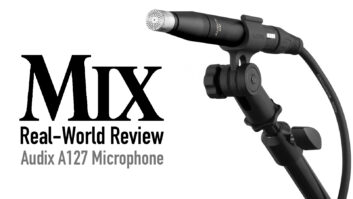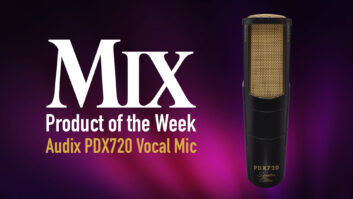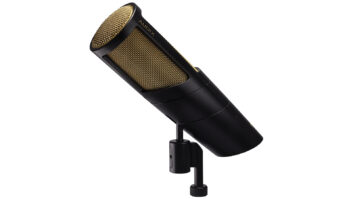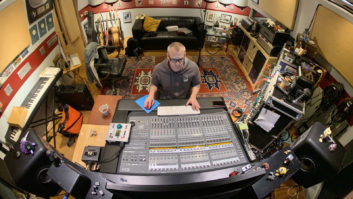Audix has been creating a buzz in the industry with its studio
monitors for some time, but in my opinion it is the company’s
stage microphones that have really put Audix on the map as a major
player in the industry. It seems that Audix has a grasp on what live
sound engineers need in today’s competitive sound reinforcement
market, where the need for sound quality sometimes gets lost in the
fight for increased volume.
The OM line of live sound microphones has been quite successful for
Audix, and the OM-6 is a good example of why. A hypercardioid dynamic
stage vocal microphone, the OM-6 has a frequency response of 48 to 19k
Hz and offers incredible gain before feedback. From its VLM (very-low-mass) capsule type
D design down to its gold contacts, the OM-6 is a solid, well-designed
microphone. Outstanding off-axis rejection, a >30dB background noise
rejection and an extremely high SPL-handling capability (>144 dB)
are all features that recommend the OM-6 for the stage environment.
IN THE FIELD
From the time I picked up an OM-6 for testing until the night before I
had to return it to Mix magazine, I had this microphone working, and
working hard. On my first night out with the OM-6, I used six of them
as front line vocal microphones in a festival situation.
During soundcheck, the monitor engineer had some trouble getting
used to the OM-6. We quickly realized that you have to hit the gain a
little harder with an OM-6 than, say, with an SM58. The mids and highs
were smooth and full-bodied with very little color, yet they maintained
a characteristic all their own. The low-end response was flat with very
little boominess, which meant that the microphone lacked weight on the
lower end of the audio spectrum. This was only a problem with female
vocalists; their voices were not cutting through in the monitor mix,
and we had to increase the vocals significantly.
Fortunately, an increase in volume was not a problem for the
OM-6—with its hypercardioid pattern, high-volume environments did
not affect its performance. In fact, feedback was never an issue when
using the OM-6, even in the most demanding situations. I was on one
show where the lead singer decided to climb on top of the main stack
and dive into the audience, with the OM-6 in hand. From the
front-of-house position, I saw the lead singer surfing across the
crowd, in front of the mains, singing (well, actually screaming); there
were absolutely no feedback problems whatsoever. Show after show after
show, I found myself reaching for the OM-6. It took some getting used
to, granted, but like any quality piece of equipment, once you feel
comfortable and confident with it and you know which applications it
excels in, it can become an effective weapon in your arsenal.
CONCLUSION
At $349, the OM-6 is strong enough to challenge almost any microphone
on the market. The sound quality was great, durability was outstanding,
the mic is cosmetically pleasing and it fits into a standard microphone
clip. What more can you ask for? Used in the right application, the
OM-6 will far exceed your expectations. I am quite sure that, in time,
Audix will design a microphone that will set standards for the
industry.
Audix Corp., www.audixusa.com







